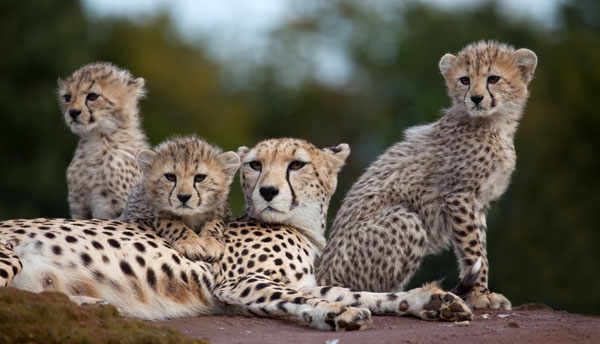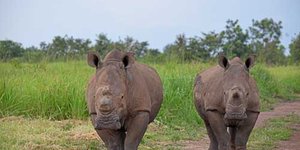Like this article?
Go on, give it a kudu!

Published on June 28 2013
Written by:
Alex Raza
829 views
Two male cheetahs were released at the Laohu Valley Reserve in the Free State this week as part of the Endangered Wildlife Trust's (EWT) Carnivore Conservation Programme to save the animals from extinction. Wild cheetahs were eliminated in Free State during the colonial period, and the two young males are the first ones to be reintroduced in the land after more than 100 years.
EWT's Carnivore Conservation Programme was first started in 2011, and it aims to reintroduce cheetahs on small South African reserves to increase their numbers through a coordinated management approach. Cheetahs are classified as a vulnerable species by the International Union for the Conservation of Nature. They are the second most threatened carnivore species in Africa after the wild dog, and it is estimated that there are fewer than 1,000 left in South Africa.
The cheetahs reintroduced into Free State were born in July 2010 on the Amakhala Game Reserve. They roamed, hunted, and fended for themselves on the 5,700 ha reserve since their birth. Their new home is a privately run wildlife sanctuary financed by the Conservation Finance International. The organization spent a considerable amount of time and money to clear snares and poison traps, remove 350 kms of internal fences, and demolish surplus farm buildings. The wild game population has also been increased by reintroduction and natural species recovery through rehabilitation. The reintroduction of cheetahs in the reserve is the next stage of their conservation plan. Snares and traps set for bush meat, human encroachment, and the persecution of farmers are the main threats to the survival of Cheetahs outside protected reserves.
Cheetah cubs have a high mortality rate due to predation by other carnivores like Lions and Hyena. The cat species is also too inbred to flourish and the low genetic diversity of cheetahs causes poor sperm, cramped teeth and other birth defects. The EWT is trying to address these conservation challenges at various levels. In 2011, the Carnivores Conservation Programme launched the Cheetah Metapopulation Project, to manage the coordinated reintroduction of the cat species on small reserves and contribute to their expansion in South Africa.
“Cheetah have been reintroduced into approximately 48 reserves across southern Africa for tourism and ecological reasons and currently 272 cheetahs, sourced from South Africa and Namibia, occur in fenced reserves. Unfortunately, the management of the reintroductions has been haphazard and unguided by a longer term conservation strategy. This has resulted in the population declining at a rate of six percent per annum due to a variety of factors including: predator-naïve cheetah being introduced into reserves with high lion densities, the sale of cheetahs into captivity and excessive contraception programmes.” said Vincent van der Merwe, coordinator of the EWT's Cheetah Metapopulation Project.
There are approximately 12,400 cheetahs remaining in the wild in 25 African countries. Namibia has the highest population with about 2,500 cheetahs.
Has been on: 0 safaris
Dissident.
© Your African Safari Ltd, All rights reserved.
Your African Safari is a safari-planning and safari review site. It was created to help support a healthy African wildlife population. All reviews are vetted before being approved and only ethical tours are published

Garamba National Park—an anchor of hope in the Democratic Republic of Congo
Published on January 09 2025
By: R.W.

Namibia imposes new visa requirements
Published on July 25 2024
By: yourafricansafari.com

Do I really need travel insurance or travel protection for my safari?
Published on July 30 2024
By: yourafricansafari.com